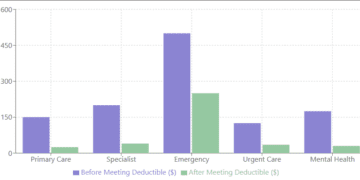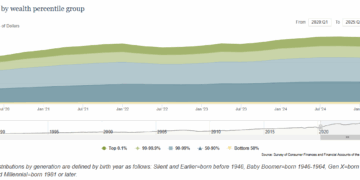Last week, President Trump signed a comprehensive Executive Order titled “Ending Crime and Disorder on America’s Streets,” marking a significant shift in federal policy toward homelessness and public safety. After reviewing both the Executive Order and the accompanying White House Fact Sheet, I want to break down what this policy change means for communities across America.
The Scale of the Challenge
The numbers paint a stark picture. According to the administration’s data, 274,224 individuals were living on the streets during the final year of the previous administration—the highest number ever recorded. The Executive Order emphasizes that the overwhelming majority of these individuals struggle with drug addiction, mental health conditions, or both, with nearly two-thirds reporting regular use of hard drugs like methamphetamines, cocaine, or opioids.
Key Provisions of the Executive Order
The Executive Order establishes several significant policy directions that will reshape how federal, state, and local governments address homelessness.
Civil Commitment Expansion: The Attorney General, working with the Secretary of Health and Human Services, will seek to reverse federal and state judicial precedents that currently limit civil commitment options. The goal is to enable the commitment of individuals with mental illness who pose risks to themselves or the public, or who are living on the streets and cannot care for themselves.
Grant Prioritization: Federal agencies will restructure their discretionary grant programs to prioritize states and municipalities that actively enforce prohibitions on open illicit drug use, urban camping, loitering, and squatting. Recipients must also implement standards for addressing individuals who pose dangers to themselves or others through assisted outpatient treatment or civil commitment.
Program Redirection: The order specifically targets what it calls failed approaches. The Substance Abuse and Mental Health Services Administration will be required to fund only evidence-based programs, explicitly excluding “harm reduction” or “safe consumption” efforts. The administration argues these programs merely facilitate illegal drug use rather than addressing underlying problems.
Housing Policy Changes: The Executive Order ends federal support for “housing first” policies, which the administration claims “deprioritize accountability and fail to promote treatment, recovery, and self-sufficiency.” Instead, the focus shifts toward requiring substance abuse treatment or mental health services as conditions for program participation.
Significant Policy Shifts
This Executive Order represents a fundamental departure from previous approaches to homelessness in several key areas.
The move away from “housing first” strategies marks perhaps the most significant philosophical shift. Housing first policies, which have been widely adopted across the country, prioritize providing immediate housing without preconditions like sobriety or treatment compliance. The new approach instead emphasizes accountability and treatment requirements as prerequisites for assistance.
The emphasis on civil commitment also represents a return to institutional approaches that were largely phased out in previous decades. The order explicitly calls for moving individuals “into long-term institutional settings for humane treatment through the appropriate use of civil commitment.”
Additionally, the order takes direct aim at harm reduction programs, including drug injection sites and safe consumption facilities, directing the Attorney General to review whether organizations operating such programs are violating federal law and potentially bringing civil or criminal actions against them.
Practical Implications for Different Stakeholders
For Individuals Experiencing Homelessness: The order will likely mean increased enforcement of laws prohibiting camping, loitering, and public drug use. Those with mental health conditions or substance use disorders may face civil commitment proceedings. Access to services will increasingly depend on compliance with treatment requirements.
For State and Local Governments: Jurisdictions will need to choose between maintaining current approaches to homelessness and accessing federal grant funding. Those that adopt the administration’s preferred enforcement and commitment standards will receive priority for federal grants, while those that continue harm reduction approaches may lose funding.
For Service Providers: Organizations receiving federal funding will face new requirements and restrictions. Those operating harm reduction programs may face legal challenges, while providers will need to collect and share health-related information with law enforcement in certain circumstances.
For Communities: The order aims to reduce visible homelessness through increased enforcement and institutionalization. However, implementation will likely require significant coordination between law enforcement, healthcare systems, and social services.
Implementation Challenges
The Executive Order acknowledges that implementation must be “consistent with applicable law and subject to the availability of appropriations.” This suggests several potential challenges.
First, many of the proposed changes will require legislative action or legal challenges to existing court precedents. The order directs the Attorney General to seek reversal of judicial precedents that currently limit civil commitment options, but this process could take years.
Second, expanding civil commitment and institutional treatment capacity will require substantial resources. The order does not specify funding sources for new facilities or programs, noting only that implementation is subject to available appropriations.
Third, coordination between federal, state, and local agencies will be essential but complex. The order involves multiple federal departments and requires cooperation from state and local governments that may have different policy priorities.
Looking Forward
This Executive Order signals a comprehensive shift toward enforcement-based and institutional approaches to homelessness. The administration clearly believes that previous strategies have failed and that more assertive intervention is necessary to address what it characterizes as a public safety crisis.
The success of this approach will ultimately depend on implementation details, funding availability, and cooperation from state and local partners. Communities across America will need to weigh the potential benefits of federal grant priority against the costs of adopting new enforcement and treatment requirements.
As this policy unfolds, we will likely see significant variation in how different jurisdictions respond, creating a natural experiment in competing approaches to one of America’s most persistent social challenges.
Check out the following:



















































